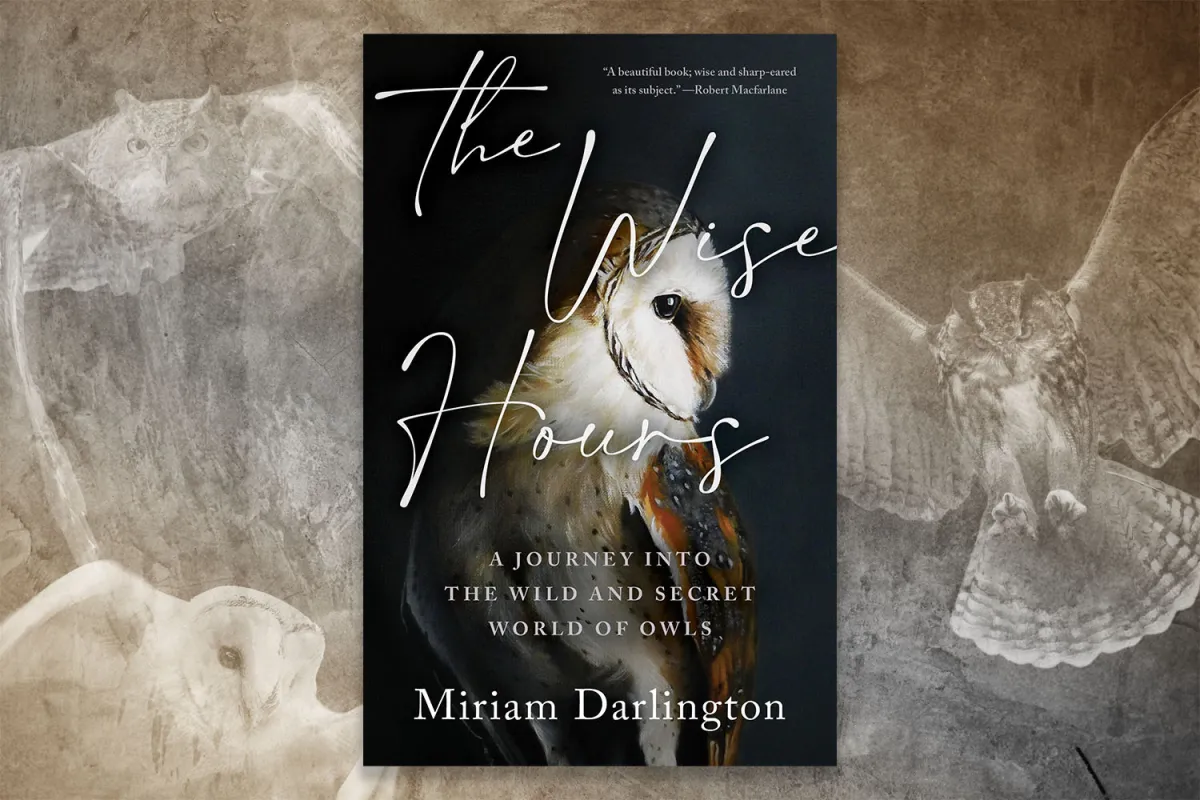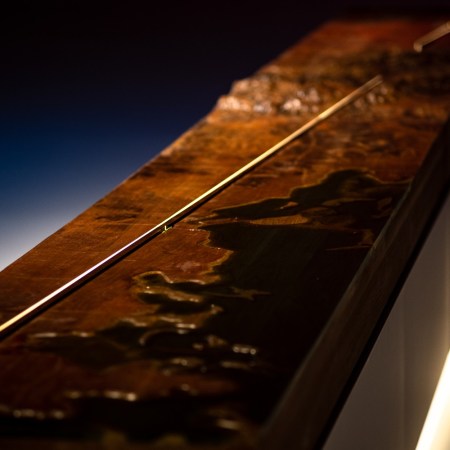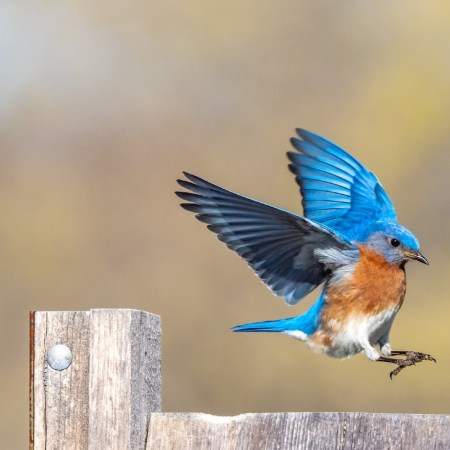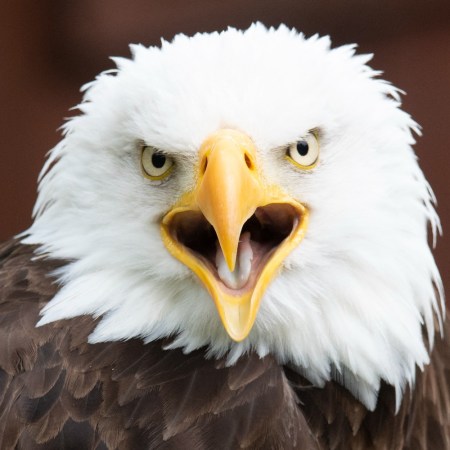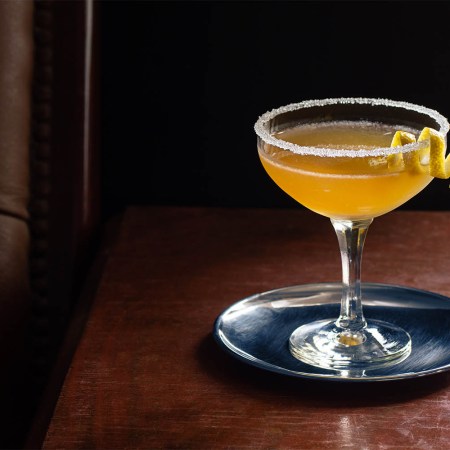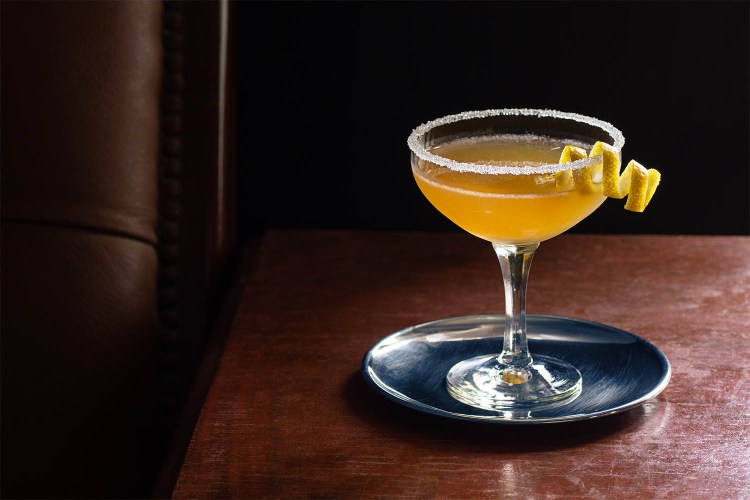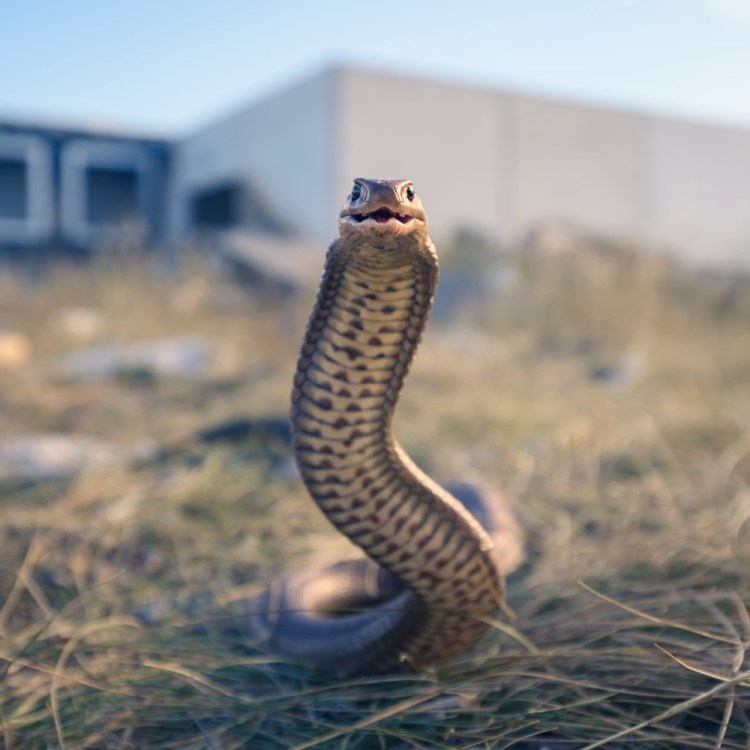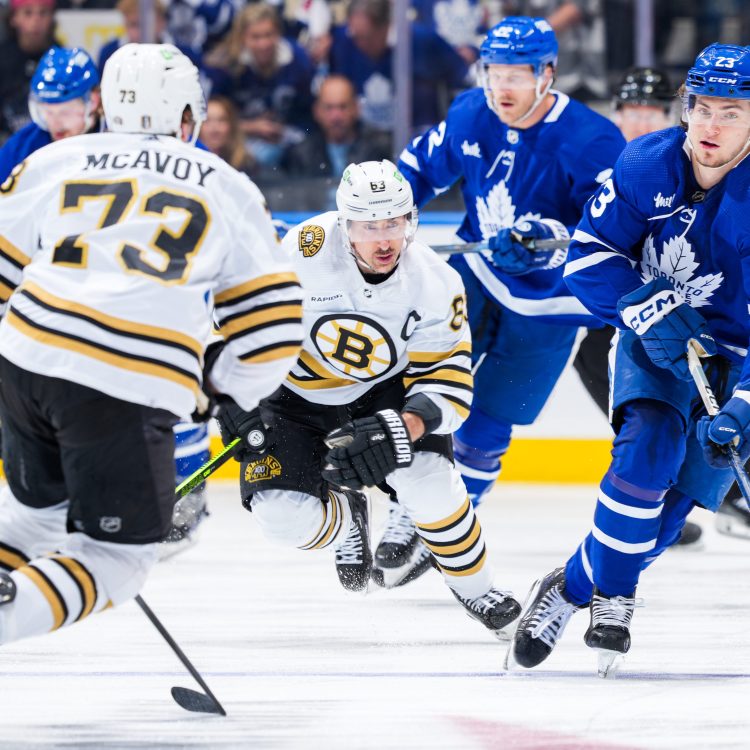The first time I heard owls in the wild, I was thoroughly terrified. The occasion: I was on a camping trip in the Hudson River Valley, and the sun had set. Suddenly I heard bizarre sounds coming from the woods — haunting, piercing and in no way human. I later learned that those were the cries of owls — something I found equal parts terrifying and intriguing.
All of which helps explain how I came to be introducing this excerpt from The Wise Hours: A Journey Into the Wild and Secret World of Owls, a new book by Miriam Darlington. Darlington is based in the U.K. and has written extensively about nature in all of its forms. (Next year will bring the release of her book about otters.) In this excerpt, Darlington chronicles what it’s like to deal with an angry owlet — and what do do if a full-grown owl has you in its sights.
“Hold this!” Jere sprang into emergency mode. He thrust the owlet into my hands. Suddenly I was holding the most ferocious and unwilling baby I have ever seen. I stood very still, trying to exude calm and authority in this precarious but highly responsible position. While Jere was chasing the stray baby, I snuggled my owl tightly into the crook of my arm, gripping its legs and using my front to block its wings from opening. It was warm, sweaty, and heavy, about the size of a Jack Russell terrier, just as strong and much more dangerous-looking. As long as I could keep its wings safely folded by its sides we’d be fine. We stared into one another’s eyes. I did my best to exude motherly rather than unfriendly vibes, but it clapped its beak threateningly, glared, and hissed like a viper. I tried not to flinch, holding the thick, twiggy ankles firmly together as I had learned to do with the Barn Owls back at home, but this baby seemed to be in possession of more ideas on how to fight back than the owls I had got to know. All it wanted was to sink some of its deadly toolkit into any part of my flesh. Nevertheless, it was impossibly downy still, its floaty beige covering like mohair, soft and clammy in my hands. Tiny wisps of down were detaching themselves and floating up to my face, tickling my nose and eyes, and with no hands free there was nothing I could do. With very few adult primary feathers coming in at the tips of its wings it could not fly yet, and eyed me angrily, not taking its orange glare away for a minute, like a gremlin that has not quite come into its full power but knows it won’t be long.
Below, I could hear Jere lifting the escaped chick from the water and climbing back up to us. But oh dear, now we had attracted the attention of the parents. Like the ominous line in the film Jurassic Park, where there’s a baby, there’s always a mother not far away. And this mother could not have been more Jurassic. She swooped over us, her massive wingspan all velocity and threat; ear tufts laid flat, she had perfect aim, whooshing, primary flight feathers splayed, warning us, her anxious yelping cry echoing around the quarry, her beak snapping. Nearly noiseless in her flight, her upper coverts densely dark brown, with her soft wingbeats the light fell beige and gold through her feathers. She swooped back again, this time on Jere, skimming over the top of his hat in a final warning fly-by. We placed the ringed chicks safely back on their ledge and the mother owl glided away, landing in a tall pine a few yards distant. From where we stood, I could see her heavily streaked front and barred tail. She perched there, anxious, ear tufts more erect in alarm, waiting for us to depart.
Slightly nervous, I asked Jere whether he’d ever been hurt by an owl.
“Yes, once or twice.”
One time, he told me, he went to fit a radio tracking transmitter to some Eagle Owls on his own at night. This seemed daredevil, but not out of character. Jere was clearly experienced and he knew what he was doing, but even the best of us can misjudge. He waited for dusk, set up the mist net, and waited, and when the owl came it was a big female. She was caught by the wing and furious, flapping and struggling; it was then that he made his mistake. In order to disentangle her he held her by the free wing and instantly her talons sank into him; one set deep in his arm, the other locked in his thigh.
“It was a mess. Blood everywhere. You can’t force the bird to let go. I just had to release the wing, bleed, and wait. It was incredibly painful.”
“Is that the only time?”
“Another time I was ringing some chicks and a mad male with one eye, who was huge, punched me in the back by flying in from behind — he hit me so hard and his aim was great, he knocked me right over.”
Our final chick of the day was harder to find. But I discovered that once Jere had got started, he wouldn’t give in easily. We walked a good distance into the woods; the reindeer moss and lichen crinkled and crunched, dry as biscuit beneath our feet. Jere searched for the signs: the faecal posts and plucking sites that he knew would eventually lead us to our quarry. There was no path so we wended our way into the trees, but Jere knew the woods well, I was sure. Even so, this place was hard to navigate. Hilly, with deep tree-covered ravines, and in places difficult to traverse, with brambles, bilberry, and broom everywhere presenting barriers to wade through or find a way around. I saw crested tits (tick!) whittering together in the high pine branches and wondered at the thick spongelike carpet that crisped and crackled beneath us. Our footfall made it impossible to be silent, and together we sounded like giants crunching through heaps of cornflakes.
Jere scampered down a cliff again, and I waited in a clearing; partly I was afraid to wander away from it as I would surely get lost, but it also meant that I could see any animals coming. For what seemed like half an hour I stood, alone in the sunlight of the glade, amongst the hot stillness, gazing at the magnificence of these woods. Jere had gone so far that I could no longer see him, and when I peered into the ravine into which he was last seen clambering there was no sign of him. Suddenly these dry woods seemed less friendly: all around viridian saplings thrust upward toward the light, bilberry leaves lay thick on low-slung bushes, the sun battered everything: lichen, moss, pines, and earth. There was not a breath of wind, the forest was crinkle-dry; smells of pine and drought rose in the heat; my water had run out and I had not paid attention to any water source or even about the way back to the track. I was alone and unprepared; a mixture of fear and wonder began to rise up my legs. My ancestors knew how to survive here; I did not. So quickly disorientated, I wouldn’t have stood a chance! Just as my heartbeat began to up its tempo, Jere sprouted elf-like from the rim of a cliff, grinning proud as a new dad, carrying a whopping and very snappy young female owl. Those huge eyes! They burned like torches. Then there were her amazing white scaly feet. They were huge. And tipped with a savage cluster of sabre-like talons. She stretched them out in front of her body, grasping, hissing.
“Do you want to hold her?” Jere asked, a slight giggle in his voice as we both marvelled at this fierce wonder-baby of the woods. She was barely a fledgling at only eight weeks old, but she could have done some serious damage if mishandled. I gripped her as firmly as I could, and snuggled her into the crook of my arm, where she vibrated with energy and alarm. In a week or two she would be away, flying into her new life of slaughtering voles, rabbits, owls, crows, and hedgehogs.
A woodpecker cried suddenly, indicating the return of the parents. All around us, a flurry of alarm jittered through the branches. One of the parents was close; I felt the back of me prickle. Would they go for us? Perhaps not in the daytime. But we couldn’t see them coming in these thick woods; only the birds knew where they were and made a fine show of pointing that out.
As I looked up and scanned into the branches above us, something mottled, ear tufts silhouetted, stared distrustfully down at us. It was the male; slightly smaller than the female, but no less dangerous. He exuded threat, his huge claws gripping the branch. I could even see his soft white eyelids. He clacked his beak and I thought of the snapped spines of rabbits, foxes, other birds of prey, all of which might fight back—but none of which would stand a chance against this supreme predator and its talons.
“This pair may have been nesting here for fifteen or even twenty springs,” Jere told me, “and these are great parents.” The Eagle Owl can be long-lived in spite of its vulnerability. They can live for twenty years in the wild, or even longer, and maybe twice that in captivity. All that experience forms something akin to wisdom, but not the human sort. It is owl knowledge: how to hunt and feed; how to attract and keep a mate; how to be vigilant; how to defend a territory, protect a family. When to be still, and when to fly. I understand, now, how the owl might have absorbed both ideas, wisdom and evil, in the human mind. Had the natural evolutionary requirement to protect its young been misconstrued as aggression or evil by our forebears? It would not hesitate to strike if it felt the need, and yet we both knew this would be a last resort. It is not wise for a predator to risk injury.
I watched the glare, the restrained potential of menace. Its amber-orange eyes smouldered.
Jere placed the precious cargo snugly back into her mossy cavity in the shade of pine saplings and we withdrew before she could lunge at his leather boots. Above us, the parent looked no less enraged. Tiny dust motes and wisps of owl down floated up through the warm air at our retreat, trailing behind us as we moved away into the lichen-clad woods.
Excerpted from The Wise Hours: A Journey Into the Wild and Secret World of Owls by Miriam Darlington. Published with permission from Tin House. Copyright (c) 2018 by Miriam Darlington. First US Publication by Tin House, 2023.
This article was featured in the InsideHook newsletter. Sign up now.
